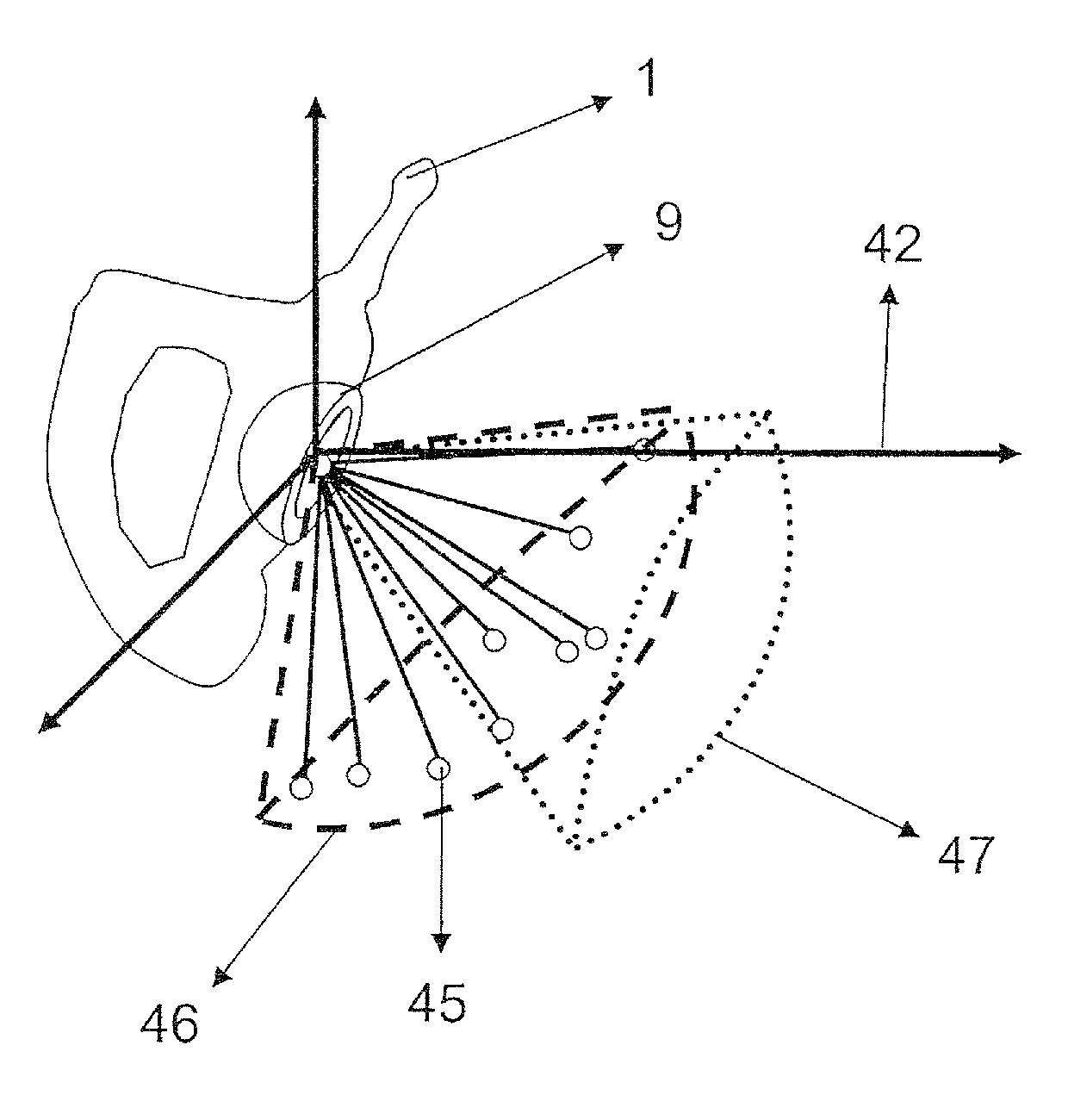Joint placement methods and apparatuses
a joint and placement technology, applied in the field of joint placement, can solve the problems of limited range of motion, post-surgical pain, dislocation, etc., and achieve the effects of improving the alignment of modifying the range of motion, and improving the bony coverage to the cup
- Summary
- Abstract
- Description
- Claims
- Application Information
AI Technical Summary
Benefits of technology
Problems solved by technology
Method used
Image
Examples
Embodiment Construction
[0060]Referring to FIG. 3, a system has a central processing unit(s) 16, one or more output devices 14, and navigator technology 17. The navigator technology 17 may be passive localization or active positioning technologies. The system also has input devices 15 for example, keyboard, mouse, foot pedal, button probes, or virtual keyboards, specialized surgical instruments 18, and devices for localizing anatomies 19 using navigator technology 17. The central processing unit(s) 16 has the computational power to process localization data, perform complex mathematical calculations and, optionally, perform image processing. The central processing unit(s) 16 also has associated modules to carry out the various features and functions described herein, examples of such modules will be described later herein. The modules may be software in memory accessible to the central processing unit(s) 16. There is a means for communication between the central processing unit(s) 16, the other apparatus c...
PUM
 Login to View More
Login to View More Abstract
Description
Claims
Application Information
 Login to View More
Login to View More - R&D
- Intellectual Property
- Life Sciences
- Materials
- Tech Scout
- Unparalleled Data Quality
- Higher Quality Content
- 60% Fewer Hallucinations
Browse by: Latest US Patents, China's latest patents, Technical Efficacy Thesaurus, Application Domain, Technology Topic, Popular Technical Reports.
© 2025 PatSnap. All rights reserved.Legal|Privacy policy|Modern Slavery Act Transparency Statement|Sitemap|About US| Contact US: help@patsnap.com



